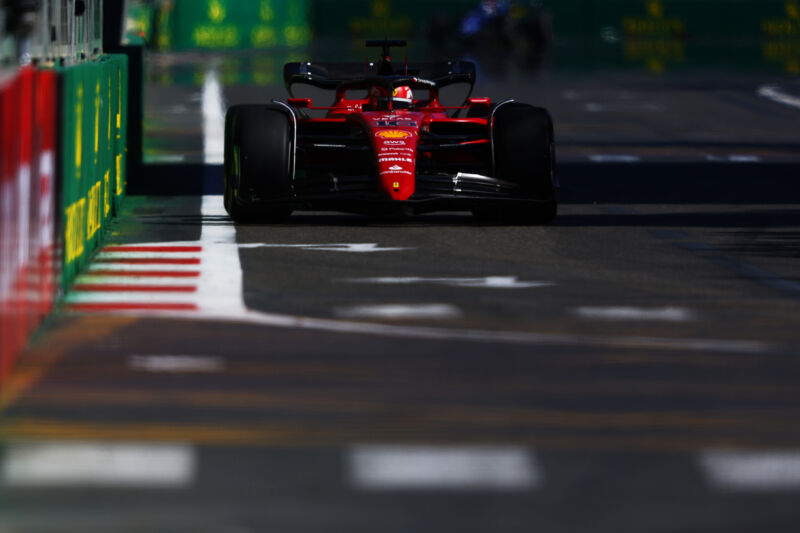Formula 1 wants to stop its cars from porpoising, and this is how

Enlarge / Charles Leclerc of Monaco driving the (16) Ferrari F1-75 on track during the F1 Grand Prix of Azerbaijan at Baku City Circuit on June 12, 2022, in Baku, Azerbaijan. (credit: Mark Thompson/Getty Images)
The sport of Formula 1 racing went through a massive change at the beginning of this season as it introduced new cars that harness aerodynamic ground effects to push them down onto the track. The aerodynamic approach was last used in F1 in the late 1970s and early 1980s before being banned on safety grounds.
One issue, then, that perhaps should have been anticipated this time was a condition called porpoising, where the cars oscillate vertically at a rather high frequency while traveling at high speed, violently shaking the driver in the process. As this season has progressed, the Grand Prix Drivers' Association has become more and more vocal about the potential health risk this poses for these athletes. And on Thursday, the Federation Internationale de l'Automobile (or FIA, the sport's governing body) announced it has a plan to do something about it.
What's porpoising?As the air travels underneath the body of an F1 car, it expands as it reaches the venturis at the rear of the car. The faster the car goes, the more downforce it generates via this expansion, until at a certain point the airflow detaches from the floor and stalls. This wipes out all the downforce immediately, and without that effect sucking the car to the ground, it raises up on its suspension.
Read 7 remaining paragraphs | Comments